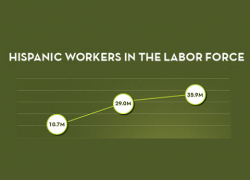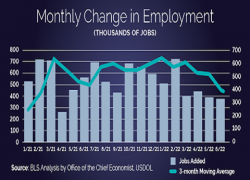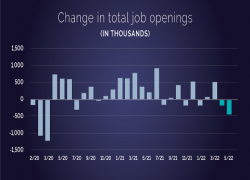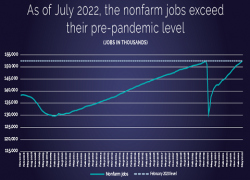In September, the U.S. economy added 263,000 jobs, with a 3-month moving average of 372,000 jobs. The unemployment rate returned to 3.5%, after rising to 3.7% in August due to rising labor force participation. The private sector added 288,000 jobs, which were somewhat offset by a loss of 25,000 jobs from government. Over 10 million jobs have been added to the economy since January 2021.
Some of the strongest job gains were in healthcare and education services (+90,000), leisure and hospitality (+83,000), and food and drinking establishments (+60,000).
This month, we are highlighting labor market outcomes for Hispanic or Latino workers. The Current Population Survey, which produces the monthly results by demographic group for the jobs report, uses the term “Hispanic or Latino ethnicity.” It refers to people who identify themselves as Hispanic, Latino, or Spanish in their survey responses. Hispanic or Latino ethnicity is different from race in the survey. So, people of this ethnicity can be of any race.
Hispanic worker unemployment has reached historic lows in recent months
There has been significant progress on labor market outcomes for Hispanic of Latino workers. In January 2021, their unemployment rate was 8.6%. In September, the unemployment rate for Hispanic and Latino workers fell to 3.8% – the lowest rate since 1973, the year the Bureau of Labor Statistics began recording it. Pre-pandemic, in February 2020, the unemployment rate for Hispanic and Latino workers was 4.4%. There is considerable month-to-month volatility in the unemployment rates by race and ethnicity. So, each monthly figure comes with some uncertainty. However, the rate has been low for some time.
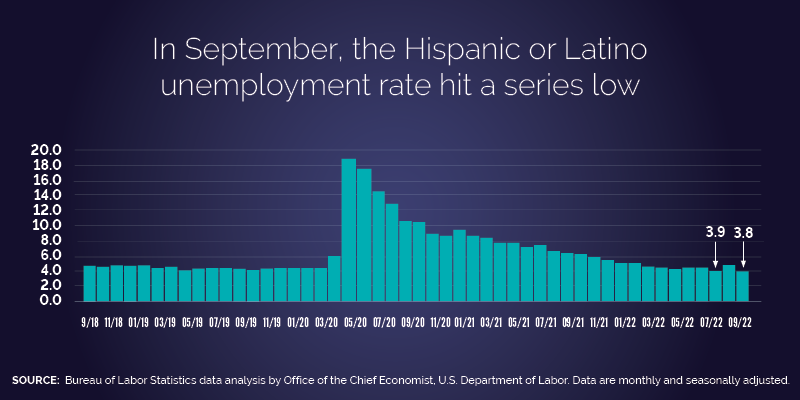
More granular data on places of origin for workers who identify as Hispanic or Latino are also available. Because the sample sizes are small, this data is published either quarterly or annually. Available quarterly data is included in the chart below. 2021 annual averages for ethnicity groups not included below include: Central or South American (6.2%, down from 10.8% in 2020), Dominican (10.6%, down from 15.8% in 2020) and Other Hispanic or Latino excluding Dominican (6.1%, down from 10.1%).
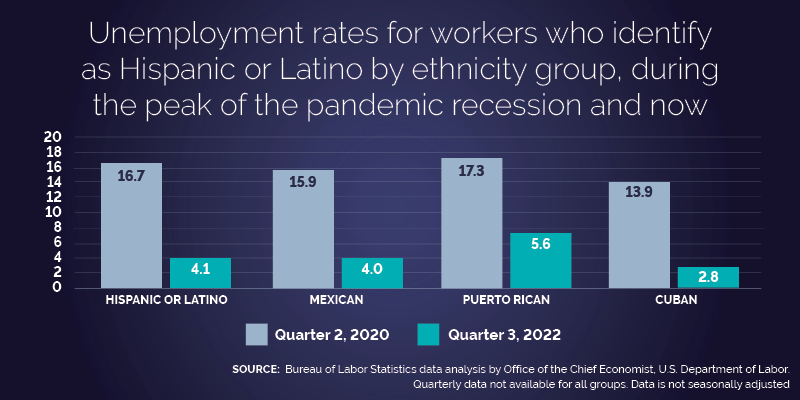
Labor force participation and population-adjusted employment
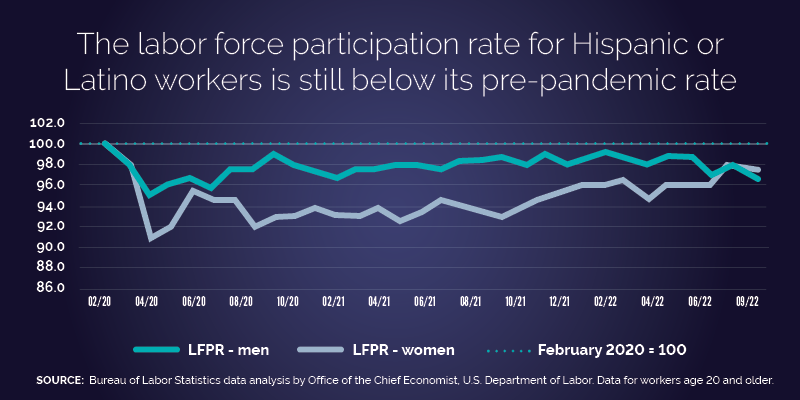
Changes in the labor force participation rate affect the unemployment rate. The decline in participation for both men and women is, potentially, what brought down the unemployment rate for Hispanic or Latino workers in September. Looking at the employment-to-population ratio is a helpful way to bypass that ambiguity and adjust employment levels by the total working age population. The employment-to-population ratios changed little for Hispanic or Latino men and women in September. The ratio ticked up 0.2 percentage points for women and fell 0.2 percentage points for men, suggesting that changes in participation are partly responsible for the decline in the unemployment rate.
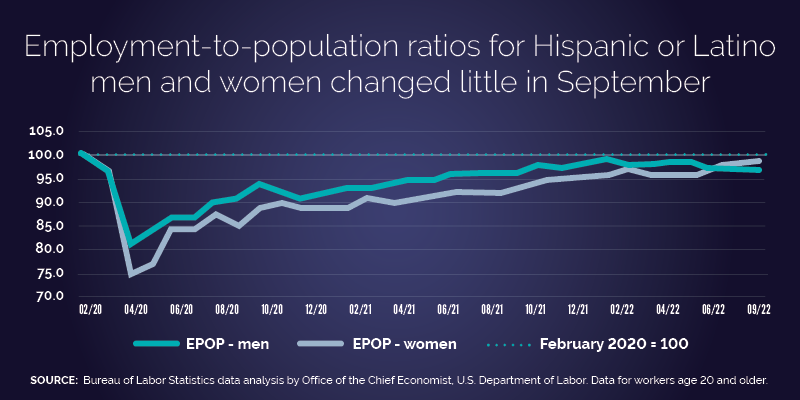
However, prime-age workers, aged 25-54, are employed at a higher share than before the pandemic. These workers are least likely to be students or retired. Since the pandemic, excess retirements have been elevated, leading to lower participation and lower employment for older workers.
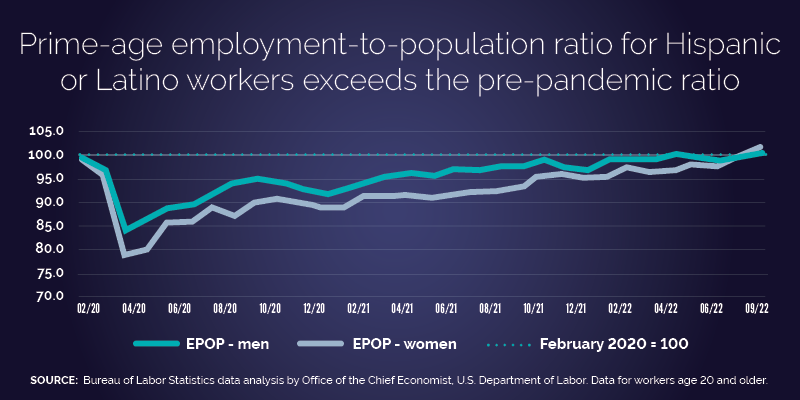
While these data provide just a snapshot, it's clear we're headed in the right direction. As Secretary Walsh noted, the strong labor market and the Biden-Harris administration's investments creating good jobs are powering a worker-centered economic recovery. And, the Department of Labor will continue to build pathways for workers to access quality jobs in which they are treated with dignity and respect.
Joelle Gamble is the chief economist for the U.S. Department of Labor.

 U.S. Department of Labor Blog
U.S. Department of Labor Blog
